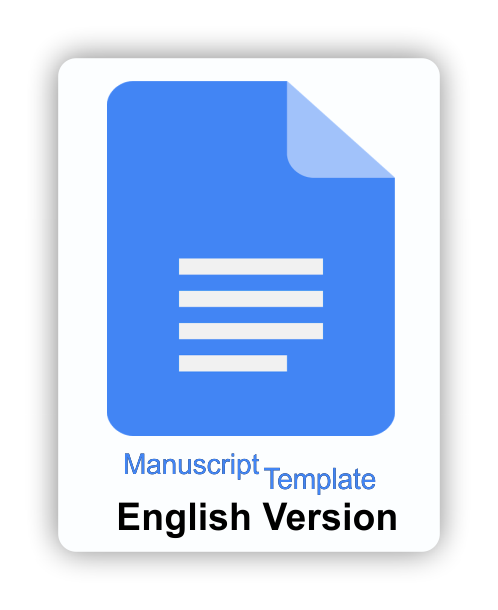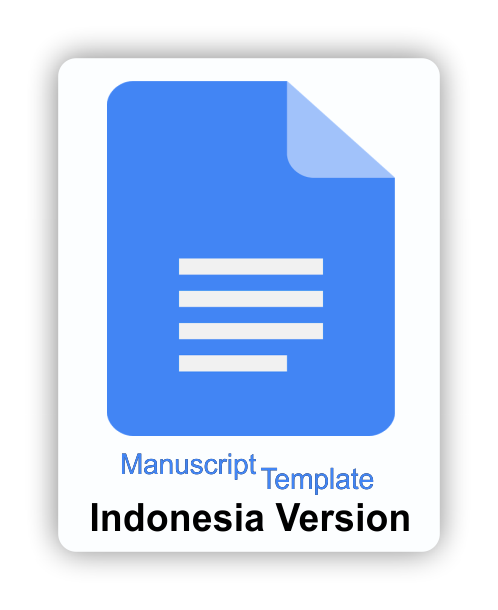The use of TikTok application and its effect on students' learning behavior
Downloads
Adawiyah, D. P. R. (2020). Pengaruh penggunaan aplikasi TikTok terhadap kepercayaan diri remaja di Kabupaten Sampang. Jurnal Komunikasi, 14(2), 135–148. https://doi.org/10.21107/ilkom.v14i2.7504
Adibah, A. W. (2014). Pengaruh latar belakang pendidikan dan pengalaman kerja terhadap etos kerja karyawan Bank BNI Syariah Kantor Cabang Kediri [Repository UIN Satu]. https://r.search.yahoo.com/_ylt=Awr1QT56J2FmagYYLVHLQwx.;_ylu=Y29sbwNzZzMEcG9zAzEEdnRpZAMEc2VjA3Ny/RV=2/RE=1717671931/RO=10/RU=http%3A%2F%2Frepo.uinsatu.ac.id%2F139%2F1%2FSKRIPSI.pdf/RK=2/RS=y2_MNf5gOVbvU37iJBk2ub8EcXs-
Aziz, H. A. A., & Dali, S. Z. M. (2023). More than just engaging? TikTok as an effective educational tool. IJEPC: International Journal of Education, Psychology and Counseling, 8(52), 133–142. https://doi.org/10.35631/IJEPC.852011
Damayanti, I. L., Nurlaelawati, I., Amalia, L. L., Dharma, N. S., & Ratnaningsih, S. (2023). Duet this: Storytelling through social media video for teaching English. English Review: Journal of English Education, 11(3), 599–608. https://doi.org/10.25134/erjee.v11i3.7706
Dasoo, N. (2023). The innovative use of social media for teaching and learning: A case study at the University of Johannesburg. 2022 International Conference on Multidisciplinary Research, 2022, 23–31. https://doi.org/10.26803/MyRes.2022.03
Febrianti, Y., Herawati, M., & Hanifah, S. (2022). Effect of using TikTok as learning media on academic achievement of pharmacy students. THE 4TH INTERNATIONAL SEMINAR ON CHEMICAL EDUCATION (ISCE) 2021, 020005. https://doi.org/10.1063/5.0113787
Galuh, I. G. A. A. K. (2017). Media sosial dan demokrasi: Transformasi aktivitas media sosial ke gerakan nyata Bali tolak reklamasi. PolGov.
Hasanah, U., & Pujiastuti, H. (2022). The perception of high school students about mathematics learning educational content in Tiktok applications. Proximal: Jurnal Penelitian Matematika dan Pendidikan Matematika, 5(2), 30–39. https://doi.org/10.30605/proximal.v5i2.1817
Hasanuddin. (2017). Biopsikologi pembelajaran: Teori dan aplikasi. In Syiah Kuala University Press. Syiah Kuala University Press. https://doi.org/10.52574/syiahkualauniversitypress.325
Kurniawan, A. (2022). Pengaruh penggunaan media sosial terhadap perilaku belajar mata pelajaran pendidikan agama islam dan budi pekerti siswa SMA Negeri 5 Bengkulu Utara [e-repository Perpustakaan IAIN Bengkulu]. http://repository.iainbengkulu.ac.id/9090/
Marini, R. (2019). Pengaruh media sosial Tiktok terhadap prestasi belajar peserta didik di SMPN 1 Gunung Sugih Kab. Lampung Tengah [Repository UIN Raden Intan Lampung]. http://repository.radenintan.ac.id/id/eprint/8430
Maryani, I., Fatmawati, L., Erviana, V. Y., Wangid, M. N., & Mustadi, A. (2018). Model intervensi gangguan kesulitan belajar. K-Media.
Misbahuddin, & Hasan, I. (2022). Analisis data penelitian dengan statistik: Analisis hubungan (Issue 1). Bumi Aksara.
Nguyen, H., & Diederich, M. (2023). Facilitating knowledge construction in informal learning: A study of TikTok scientific, educational videos. Computers & Education, 205(1), 104896. https://doi.org/10.1016/j.compedu.2023.104896
Olsson, S. E., Schmitz, J. F., Huang, A. E., & Murray, A. D. (2023). A descriptive analysis of otolaryngology presence on the social media platform TikTok. Laryngoscope Investigative Otolaryngology, 8(6), 1516–1521. https://doi.org/10.1002/lio2.1186
Priyatno, D. (2013). Analisis korelasi, regresi, dan multivatiate dengan SPSS. Gava Media.
Puspita, R. (2024). Perubahan dan keberlanjutan dalam studi komunikasi dan manajemen. Penerbit NEM.
Rachman, L. A., Rumana, N. A., Fannya, P., & Indawati, L. (2021). Motivasi belajar mahasiswa rekam medis pada pembelajaran online di masa pandemi. Edu Cendikia: Jurnal Ilmiah Kependidikan, 1(3), 95–105. https://doi.org/10.47709/educendikia.v1i3.1129
Reza, F., Dewi, C. K., & Yudhyani, E. (2021). Statistika deskriptif untuk ekonomi & bisnis. Tahta Media Group.
Roflin, E., & Zulvia, F. E. (2021). Kupas tuntas analisis korelasi. Penerbit NEM.
Siregar, S. (2017). Metode penelitian kuantitatif dilengkapi dengan perbandingan perhitungan manual & SPSS. Prenada Media.
Sugiyono. (2019). Metode penelitian pendidikan (kuantitatif, kualitatif, kombinasi, R&D dan penelitian pendidikan). Alfabeta.
Susilowati. (2018). Pemanfaatan aplikasi Tiktok sebagai personal branding di Instagram (studi deskriptif kualitatif pada Akun @bowo_allpennliebe). Komunikasi: Jurnal Komunikasi, 9(2), 176–185. https://doi.org/10.31294/jkom.v9i2.4319
Syah, R. J., Nurjanah, S., & Andri Mayu, V. P. (2020). Tikio (TikTok app educational video) based on the character education of newton's laws concepts preferred to learning for generation Z. Pancaran Pendidikan, 9(4), 85–94. https://doi.org/10.25037/pancaran.v9i4.325
Tanjung, L. A., Mardianto, & Halimah, S. (2023). Development of islamic religious education (PAI) learning media based on TikTok to improve students' critical thinking skills. EDUTEC : Journal of Education and Technology, 7(2), 625–633. https://doi.org/10.29062/edu.v7i2.693
Witte, M. M., McEvoy, J. M., & Hotz, G. A. (2023). TikTok is an effective platform for bicycle safety injury prevention education. MedRxiv, 1(1), 1–21. https://doi.org/10.1101/2023.08.02.23293540
The journal allows the author(s) to hold the copyright without restrictions. Finally, the journal allows the author(s) to retain publishing rights without restrictions
 | Jurnal Inovasi Teknologi Pendidikan by http://journal.uny.ac.id/index.php/jitp is licensed under a Creative Commons Attribution-ShareAlike 4.0 International License. |























